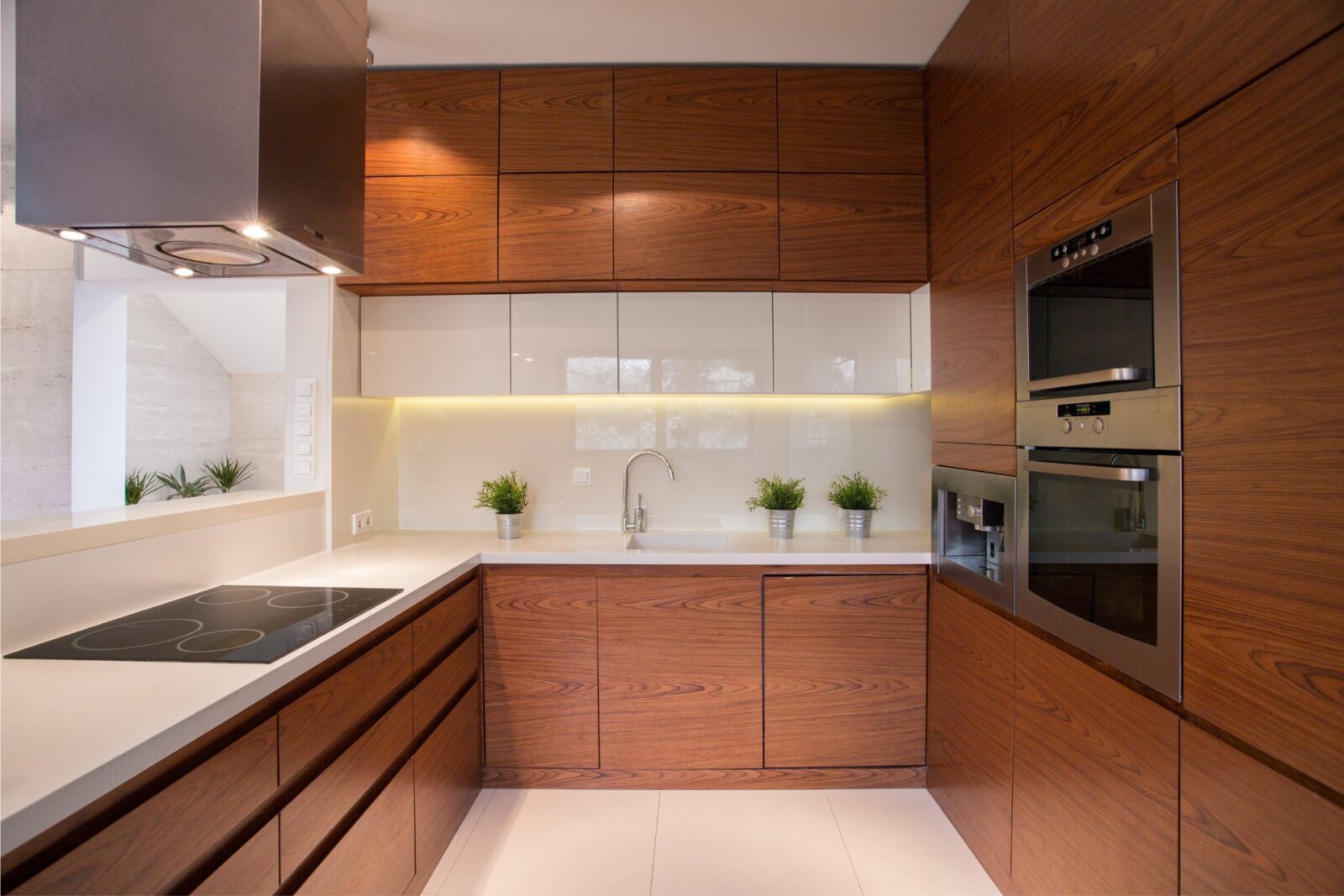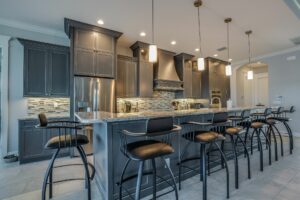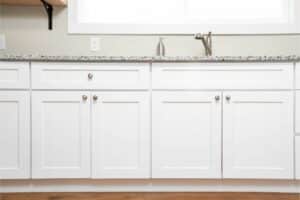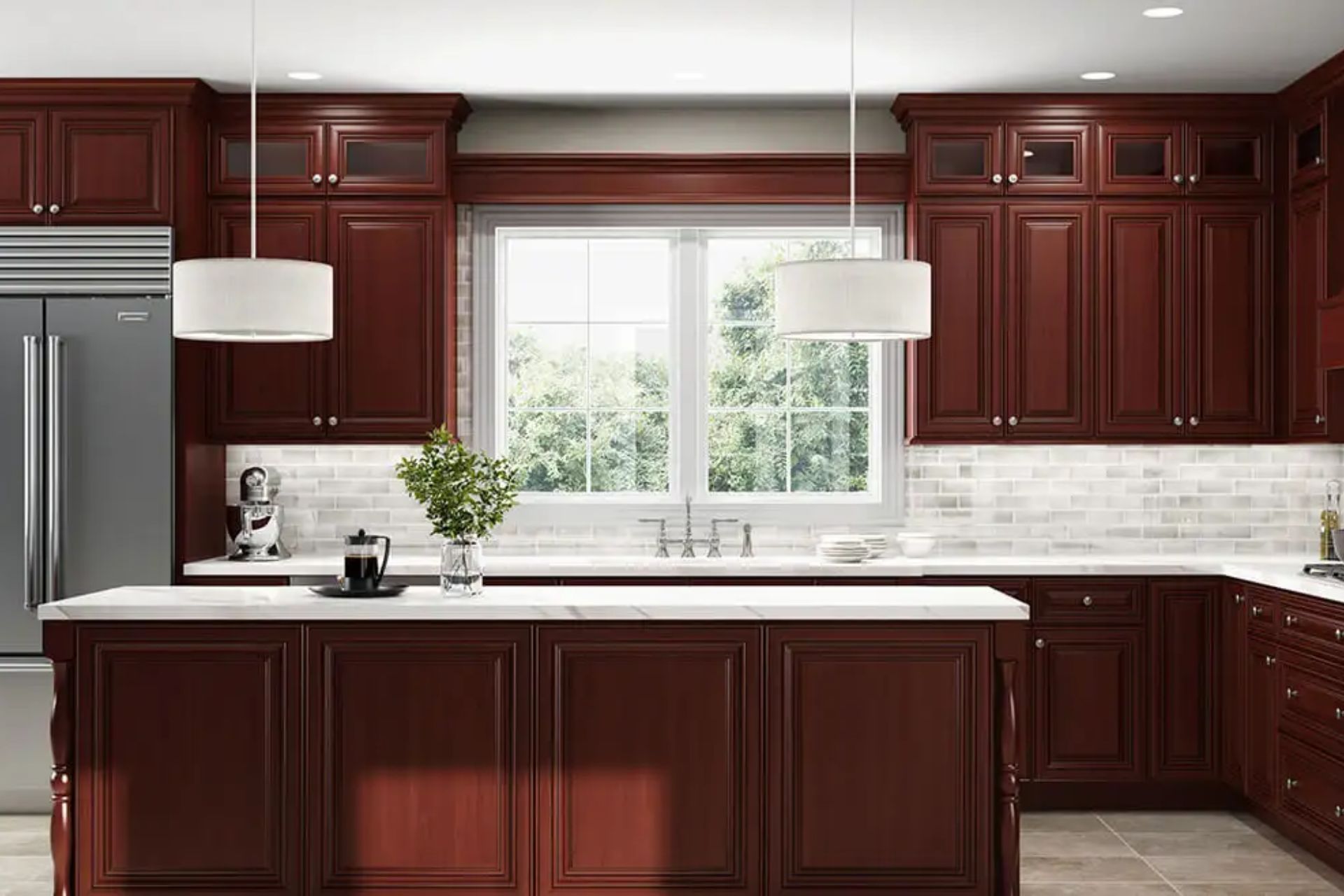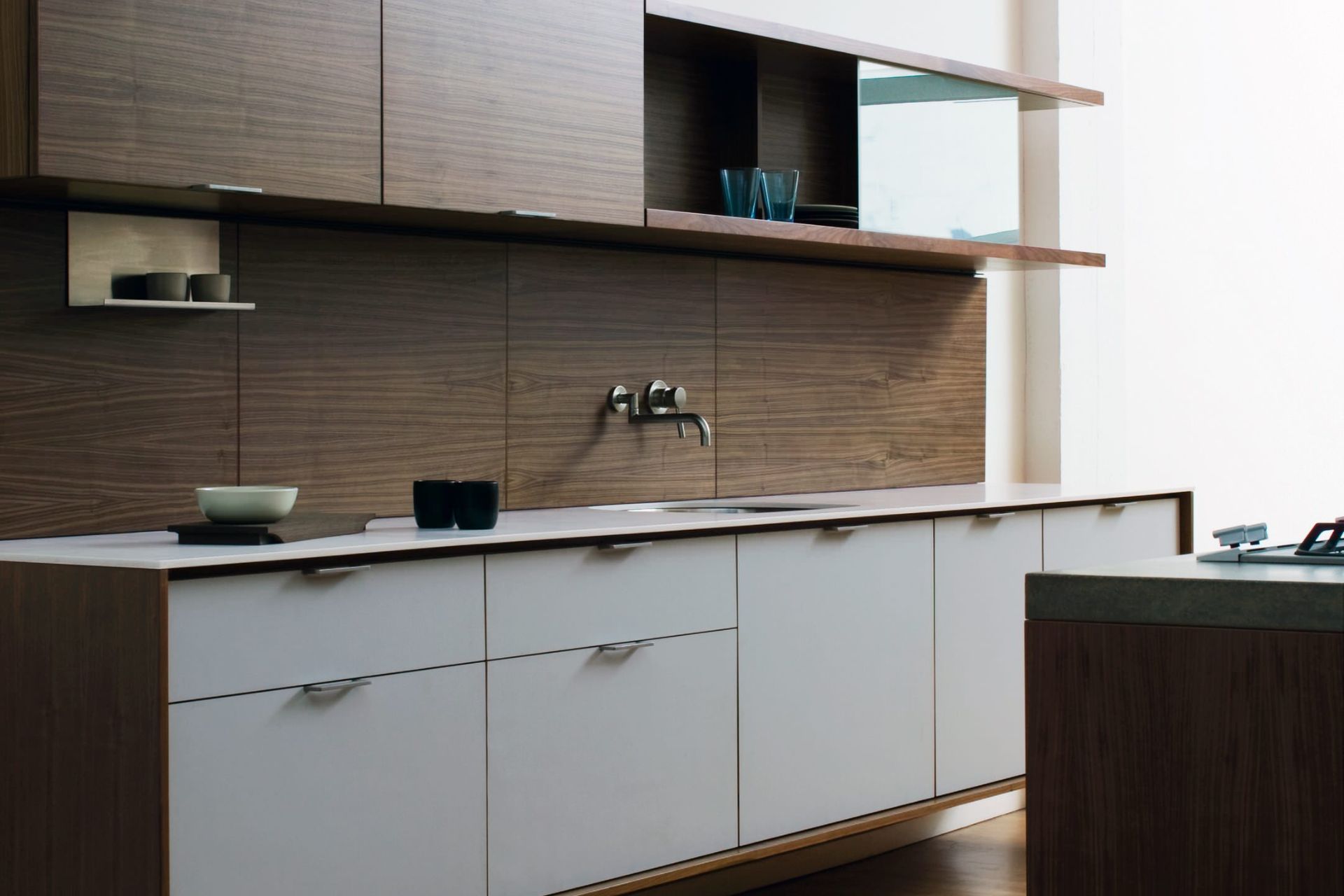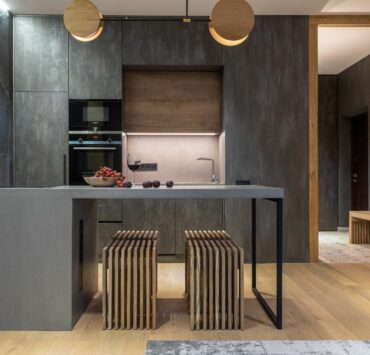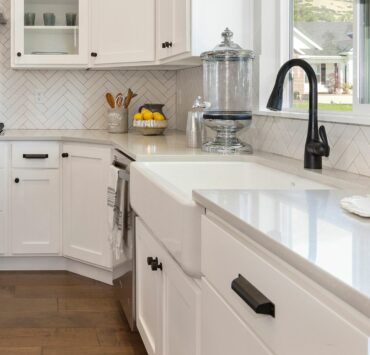Are you a homeowner considering changing your kitchen cabinets? If so, European kitchen cabinets might be the perfect choice for you!
Let’s explore everything you need to know about these stylish and functional cabinets.
We’ll discuss what sets them apart from standard cabinets, the materials used, timeless cabinet styles, and more. So, grab a cup of coffee and let’s dive into the world of European kitchen cabinets.
What is European Style Cabinets?
European style kitchen cabinets, also known as frameless or full-access cabinets, originated in Europe and have gained popularity in the United States over the years. These cabinets are characterized by their sleek, minimalist design, with an emphasis on functionality and efficient use of space. Their streamlined appearance is achieved by eliminating the face frame found in traditional cabinets, allowing for more storage space and easier access to cabinet contents. The frameless construction also makes it easier to clean and maintain, as there are fewer nooks and crannies where dirt and grime can accumulate.
How Much Do European Kitchen Cabinets Cost?
The cost of European kitchen cabinets can vary widely depending on the quality of materials used, the complexity of the design, and the manufacturer. On average, you can expect to pay between $150 and $400 per linear foot for European cabinets. However, keep in mind that prices can go even higher for custom or high-end cabinetry. It’s important to note that while European cabinets may come with a higher price tag, their durability, functionality, and modern aesthetic can make them well worth the investment.
Factors that can affect the cost of European kitchen cabinets include:
- Material: Higher-quality materials, such as solid wood or premium MDF, will generally be more expensive than lower-quality options like particleboard.
- Finish: High-gloss lacquers, wood veneers, or other premium finishes can increase the cost of European cabinets.Hardware:
- High-quality hardware, like soft-close hinges and drawer slides, can add to the overall cost of the cabinets.
- Customization: Custom cabinets designed to fit your specific needs and preferences will usually be more expensive than pre-fabricated options.
- Installation: Professional installation of European kitchen cabinets can add to the overall cost, but it’s often worth it to ensure proper alignment and stability.
What is the Difference Between European and Standard Cabinets?
The main difference between European and standard cabinets lies in their construction. European cabinets are frameless, meaning they don’t have a face frame on the front of the cabinet box. This results in a sleeker, more modern appearance and allows for more storage space within the cabinet. On the other hand, standard cabinets, also known as framed cabinets, feature a face frame that provides additional support and gives the cabinet a more traditional look.
Another significant difference between European and standard cabinets is the way they are installed. European cabinets are typically mounted on adjustable legs, allowing for easy leveling and adjustments, while standard cabinets are often installed on a wooden base or directly on the floor.
What is European Kitchen Cabinet Material?
They typically made from engineered wood products, such as MDF (medium-density fiberboard) or particleboard.
MDF known for their durability and resistance to moisture. These materials are often covered with a variety of finishes, including laminates, wood veneers, or high-gloss lacquers, to achieve a contemporary look. Additionally, European cabinets may also feature eco-friendly materials, such as bamboo or recycled wood products.
When selecting materials for your European kitchen cabinets, consider factors such as durability, resistance to moisture and stains, and ease of maintenance. High-quality materials will ensure that your cabinets remain functional and attractive for years to come.
What is the Most Timeless Cabinet Style?
When it comes to timeless cabinet styles, the Shaker style is often considered the most enduring. Shaker cabinets are characterized by their simple, clean lines and functional design, which have remained popular for centuries. Although Shaker cabinets originated in the United States, their minimalist aesthetic complements European-style kitchens quite well. Other timeless cabinet styles include traditional raised-panel cabinets and modern flat-panel cabinets.
In addition to these classic styles, there are other design elements that contribute to a timeless kitchen aesthetic:
- Neutral colors: Cabinets in neutral colors, such as white, gray, or beige, are versatile and can easily adapt to changing trends.
- Natural materials: Incorporating natural materials, like wood or stone, can create a timeless and inviting atmosphere in your kitchen.
- Minimal ornamentation: Keeping decorative elements to a minimum can help ensure that your cabinets maintain a classic and timeless appeal.
Why are European Cabinets More Expensive?
European cabinets tend to be more expensive for several reasons.
Firstly, their frameless construction requires high-quality materials and precise craftsmanship to ensure durability and stability. Secondly, European cabinets often feature innovative design elements, such as soft-close hinges and drawer slides, which can add to the overall cost. Lastly, the sleek, modern aesthetic of European cabinets often demands premium finishes and materials, further contributing to the higher price tag.
What is the Most Expensive Cabinet Style?
The most expensive cabinet style is typically custom cabinetry, which can be tailored to fit your specific needs, design preferences, and budget. Custom cabinets can be designed in any style, including European, and can feature high-quality materials, intricate details, and innovative storage solutions. The cost of custom cabinets can range from $500 to $1,200 per linear foot or more, depending on the level of customization and materials used.
Are European kitchen cabinets suitable for small kitchens?
Absolutely! European kitchen cabinets are an excellent choice for small kitchens due to their efficient use of space and minimalist design. The frameless construction allows for more storage space within the cabinet, and the sleek, modern aesthetic can help make a small kitchen feel more open and airy.
Can I mix European and standard cabinets in my kitchen?
Yes, you can! It’s essential to maintain a cohesive design. One way to achieve this is by choosing a consistent color palette and finish for both types of cabinets. Additionally, you can use European cabinets for the lower or upper cabinets and standard cabinets for the other section to create a harmonious blend of styles.
How do I maintain and clean?
To maintain and clean European kitchen cabinets, it’s essential to use gentle cleaning methods and avoid abrasive cleaners or materials that could damage the cabinet finish. Use a soft, damp cloth and a mild detergent to wipe down the cabinet surfaces. For tougher stains or grime, you can use a non-abrasive cleaner specifically designed for cabinetry.
Follow the manufacturer’s recommendations for cleaning and maintenance to prolong the life of your cabinets.
Can I install European kitchen cabinets myself?
While it’s possible it can be a challenging task, especially for those without carpentry experience. Frameless cabinets require precise measurements and careful installation to ensure stability and proper alignment. If you’re not confident in your DIY skills, it’s best to hire a professional to handle the installation.
European kitchen cabinets are an excellent choice for homeowners looking to update their kitchen with a sleek, modern, and functional design. Although they may come with a higher price tag, their durability, efficiency, and timeless appeal make them a worthwhile investment. By understanding the differences between European and standard cabinets, the materials used, and the timeless cabinet styles, you’ll be well-equipped to
